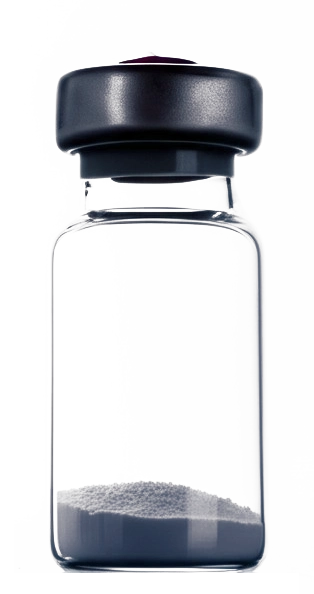Performance-enhancing peptides are short chains of amino acids that can significantly influence various physiological processes in the body, especially muscle growth and recovery. Unlike anabolic steroids, peptides generally have more targeted effects and can stimulate the release of growth hormone, enhance muscle repair, and improve overall athletic performance. These substances work by binding to specific receptors on cells, which in turn triggers a cascade of intracellular signals. For athletes, this means enhanced protein synthesis, reduced inflammation, and faster recovery times, all crucial for maximizing training benefits.
Peptides are becoming increasingly popular among athletes seeking a competitive edge because they offer a more refined approach to performance enhancement. Traditional methods like steroids come with a host of side effects, whereas peptides, when used correctly, present a more favorable risk profile. They are designed to mimic or amplify the body’s natural processes, making them a powerful tool for those looking to optimize their physical capabilities.
The mechanism of action varies from one peptide to another. Some, like growth hormone-releasing hormones (GHRH), stimulate the pituitary gland to produce and release more growth hormone. Others, such as Insulin-like Growth Factor-1 (IGF-1) analogs, directly promote muscle growth and repair. Understanding these mechanisms is key to using peptides effectively and safely. Athletes should always consult with knowledgeable healthcare professionals before starting any peptide regimen to ensure it aligns with their specific needs and health status.
Moreover, the effectiveness of performance-enhancing peptides is closely tied to proper nutrition and training. Peptides are not magic bullets; they work best when combined with a well-structured workout plan and a balanced diet that supports muscle growth and recovery. Athletes need to focus on consuming adequate protein, carbohydrates, and healthy fats to provide the necessary building blocks and energy for optimal results. Without this holistic approach, the benefits of peptides may be limited. Therefore, peptides should be viewed as a component of a comprehensive strategy to enhance athletic performance.
Ultimately, the appeal of performance-enhancing peptides lies in their potential to provide targeted benefits with fewer side effects compared to traditional performance-enhancing drugs. However, it is crucial for athletes to stay informed about the legal and ethical implications of using these substances. Many sports organizations have strict regulations regarding the use of peptides, and athletes must adhere to these rules to avoid penalties. Education and responsible use are paramount in ensuring that peptides are used safely and ethically in the pursuit of athletic excellence.
Several peptides are recognized for their ability to promote muscle growth, primarily by enhancing protein synthesis and stimulating the release of growth hormone. Among the most popular are growth hormone-releasing peptides (GHRPs) and Insulin-like Growth Factor-1 (IGF-1) analogs. GHRPs, such as GHRP-6 and Ipamorelin, stimulate the pituitary gland to release growth hormone, which in turn promotes muscle growth, fat loss, and improved recovery. IGF-1 analogs, like IGF-1 LR3, directly stimulate muscle growth and repair by binding to IGF-1 receptors on muscle cells.
These muscle growth peptides work through different but complementary pathways. GHRPs increase growth hormone levels, which then signals the liver to produce IGF-1. IGF-1 then acts on muscle cells to increase protein synthesis and decrease protein breakdown, resulting in net muscle growth. This synergistic effect makes GHRPs and IGF-1 analogs particularly effective when used in combination. Athletes often cycle these peptides to maximize their benefits while minimizing the risk of desensitization or other potential side effects.
The effectiveness of muscle growth peptides also depends on the athlete’s training regimen and nutritional status. To maximize muscle growth, athletes need to engage in resistance training that challenges their muscles and provides the stimulus for growth. Additionally, adequate protein intake is essential to provide the building blocks for new muscle tissue. Peptides enhance the body’s ability to utilize protein for muscle growth, but they cannot replace the need for a well-rounded diet. Athletes should aim for a protein intake of around 1.6 to 2.2 grams per kilogram of body weight per day to support muscle growth and repair.
Moreover, the timing of peptide administration can also influence their effectiveness. Some athletes prefer to administer GHRPs before bedtime to coincide with the body’s natural growth hormone release, while others take them before or after workouts to enhance muscle recovery and growth. IGF-1 analogs are often administered post-workout to take advantage of the increased insulin sensitivity and nutrient uptake in muscle cells. Experimenting with different timing protocols can help athletes optimize the benefits of these peptides.
In conclusion, muscle growth peptides offer a powerful tool for athletes looking to maximize hypertrophy and improve their physical performance. By understanding how these peptides work and integrating them with a comprehensive training and nutrition plan, athletes can achieve significant gains in muscle mass and strength. However, it is crucial to use these substances responsibly and under the guidance of a healthcare professional to ensure safety and effectiveness. Continuous monitoring and adjustments are necessary to fine-tune the peptide regimen and achieve the best possible results.
Recovery peptides play a crucial role in accelerating post-workout muscle repair and reducing inflammation, allowing athletes to bounce back faster from intense training sessions. These peptides work by promoting tissue regeneration, reducing muscle soreness, and modulating the inflammatory response. Among the most effective recovery peptides are BPC-157 and Thymosin Beta-4, both of which have demonstrated significant benefits in promoting healing and reducing inflammation.
BPC-157, or Body Protection Compound-157, is a synthetic peptide known for its potent healing properties. It promotes angiogenesis, the formation of new blood vessels, which enhances blood flow to injured tissues and accelerates the healing process. BPC-157 also has anti-inflammatory effects, reducing swelling and pain in damaged muscles and joints. This peptide is particularly useful for athletes recovering from sprains, strains, and other musculoskeletal injuries. By accelerating tissue repair and reducing inflammation, BPC-157 allows athletes to return to training sooner and perform at their best.
Thymosin Beta-4 is another powerful recovery peptide that promotes tissue regeneration and reduces inflammation. It stimulates the migration of stem cells to the site of injury, where they can differentiate into new muscle cells and repair damaged tissue. Thymosin Beta-4 also has anti-inflammatory effects, reducing the production of pro-inflammatory cytokines and promoting the resolution of inflammation. This peptide is particularly effective for athletes recovering from intense workouts or injuries that cause significant muscle damage. By promoting tissue regeneration and reducing inflammation, Thymosin Beta-4 helps athletes recover faster and prevent chronic pain and dysfunction.
The benefits of recovery peptides are not limited to muscle repair and inflammation reduction. These peptides can also improve joint health, enhance immune function, and promote overall well-being. BPC-157, for example, has been shown to protect the gut lining and reduce symptoms of inflammatory bowel disease. Thymosin Beta-4 has been found to improve cardiovascular function and protect against heart damage. By addressing multiple aspects of health and recovery, these peptides can help athletes stay healthy and perform at their best.
In conclusion, recovery peptides offer a valuable tool for athletes looking to accelerate post-workout muscle repair, reduce inflammation, and improve overall recovery. By understanding how these peptides work and incorporating them into a comprehensive recovery plan, athletes can minimize downtime, prevent injuries, and optimize their performance. However, it is crucial to use these substances responsibly and under the guidance of a healthcare professional to ensure safety and effectiveness. Continuous monitoring and adjustments are necessary to fine-tune the peptide regimen and achieve the best possible results. With the right approach, recovery peptides can help athletes unlock their full potential and achieve their goals.
Here are some quick answers to the questions discussed in this article:
Performance-enhancing peptides are short chains of amino acids that stimulate growth hormone release, enhance muscle repair, and improve athletic performance by binding to specific cell receptors.
GHRPs (like GHRP-6 and Ipamorelin) and IGF-1 analogs stimulate growth hormone release and directly promote muscle growth and repair by enhancing protein synthesis.
Recovery peptides like BPC-157 and Thymosin Beta-4 promote tissue regeneration, reduce muscle soreness, and modulate the inflammatory response, accelerating post-workout recovery.

